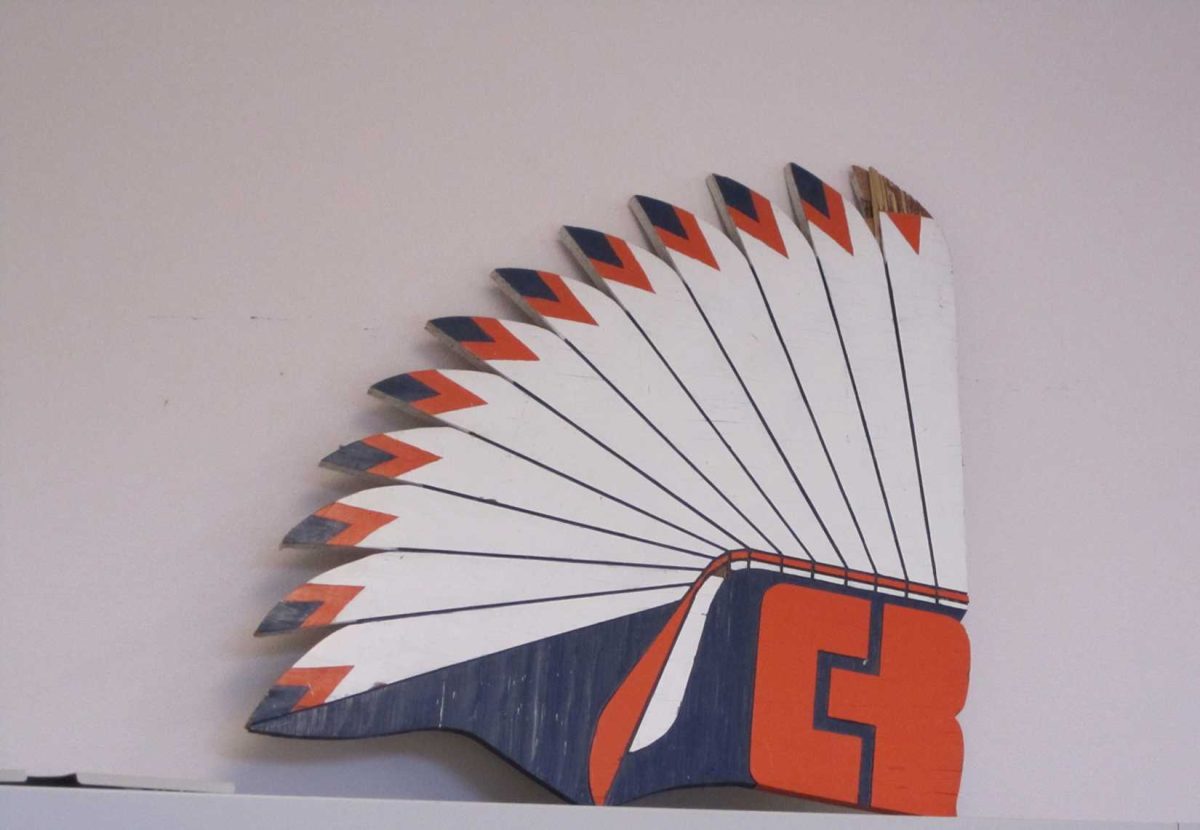Many Native American mascots and logos have disappeared from college sports.
The Arkansas State Indians became the Red Wolves, the Indiana University of Pennsylvania Indians became the Crimson Hawks and Bradley University removed all Native American imagery from its logo.
Even Cosumnes River College replaced its indigenous mascot, the Chief, with the Hawk in 2000 because of numerous complaints, according to the Lodi News Sentinel.
However, the University of North Dakota is currently fighting to keep its controversial mascot, the Fighting Sioux, with supporters on both sides of the issue.
Bleacher Report writer Nick DeWitt referred to Native American mascots as, “more reminiscent of pride and leadership and courage,” defending them as celebrating Native American culture.
But some students at CRC disagreed.
“How are they going to represent my people when they helped destroy my people? That makes no sense,” said Tanya Reyes, president of CRC’s indigenous club.“They’re actually mocking us because they weren’t raised in the culture. What do they know what is traditional to us?”
Other students compared indigenous mascots to University of Notre Dame’s Fighting Irish.
“I feel that if other cultures and other teams can have certain kinds of mascots, then how come we can’t have ours?” asked Michael Rojas, a 45-year-old undecided major. “We’re not harming nobody.”
But Ronald F. Levant, former American Psychological Association president, said these mascots are hurting people.
“These mascots are teaching stereotypical, misleading and too often, insulting images of American Indians,” Levant said, according to the APA website.
“These negative lessons are not just affecting American Indian students; they are sending the wrong message to all students.”
Keith Gorospe, a 25-year-old environmental studies and sustainability major, said Native Americans should be the ones to decide.
But even the research on how Native Americans view mascots is split.
A 2002 poll conducted by Sports Illustrated found that 75 percent of Native Americans polled had no problem with the team’s nickname.
But the APA publicly disagreed.
In 2005, the APA called for the immediate retirement of all American Indian mascots, symbols, images and personalities by schools, colleges, universities, athletic teams and organizations, according to the APA website.
And teams at every level have started to change, except for professional teams.
“While we see these middle schools and high schools and colleges change, the problem will not die because of these larger, professional private corporations that keep these mascots alive,” said Jason Newman, a CRC professor who has a doctorate in U.S. history with a designated emphasis on Native American history. “But at least within our smaller communities we’re seeing this racist garbage be pushed out of the system.”
“Can you imagine if there was a team called the white skins, or the black skins? And how Americans from those ethnic groups might be very upset if they had their culture turned into a mascot?”
CRC students who are interested in more information on the issue can check out the video “In Whose Honor?” from the library.

